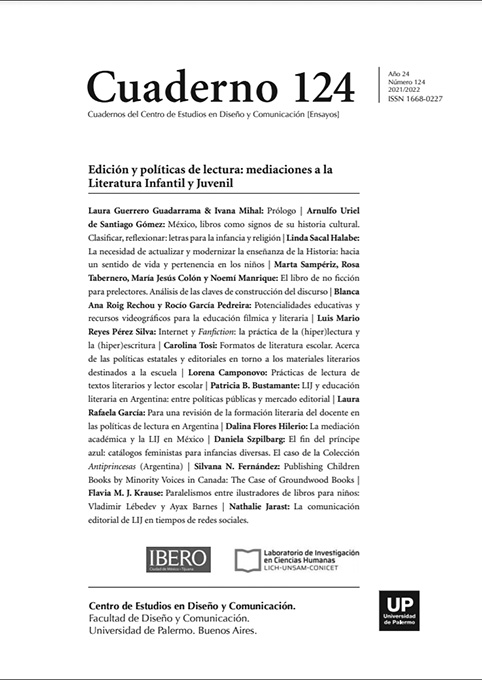Internet y Fanfiction: la práctica de la (hiper)lectura y la (hiper)escritura
Abstract
In terms of fanfiction, the hyperwriter uses the Internet as a platform for creation and recreation. The concepts of multinarrative and hypernarrative are essential for the fanfiction phenomena. The fanfiction phenomena is based on the reading process, in those people we call readers, as I may say: hyperreaders. This article is based on the reading and the writing process made by the hyperwriters. They will build an infinite, “chaotic” and a simultaneous network of hypertexts in the cyberspace.
References
Arévalo, A.; Cordón, J. & Gómez, R. (2014). “La autopublicación, un nuevo paradigma en la creación digital del libro”. Acimed, 25 (1). Sin número de páginas. Disponible en: http://www.acimed.sld.cu/index.php/acimed/article/view/494/368
Aerseth, E. J. (1997). Cybertext. Perspectives on Ergodic Literature. Baltimore: The Johns Hopkins University Press.
Borges, J. L. (2009). Ficciones. Madrid: Alianza Editorial.
Chatelain, M. (2012). “Harry Potter and The Prisoner Of Copyright Law: Fan Fiction, Derivative Works, And The Fair Use Doctrine”. Tulane Journal Of Technology & Intellectual Property, 15, 199-217. Disponible en: https://journals.tulane.edu/TIP/article/view/2612
Foucault, M. (2015). ¿Qué es un autor?. Ciudad de México: Gandhi Ediciones.
Frye, N. (1977). Anatomía de la crítica. Caracas: Monte Avila.
Genette, G. (1989). Palimpsestos. La literatura en segundo grado. Madrid: Taurus, 1989.
Goldsmith, K (2015). Escritura No-creativa: La gestión del lenguaje en la era digital. Ciudad de México: Tumbona Ediciones y Sur+ Ediciones.
Hafferman, V. (2016). Magic and Loss: The Internet as art. New York: Simon & Schuster Paperbacks.
Iser, W. (1987). El acto de leer. Madrid: Taurus.
Landow, G. (2009). Hipertexto 3.0 La teoría crítica y los nuevos medios en una época de globalización. Barcelona: Paidós.
Lipton, J. D. (2014). “Copyright and The Commercialization Of Fanfiction”. Houston Law Review, 52 (2), 425-466. Disponible en: https://houstonlawreview.org/article/3989-copyright-and-the-commercialization-of-fanfiction
Mora, L. V. (2016, septiembre-octubre). “La música sin techo”. Tierra Adentro, 218,19-23.
Nepote, M. (2016, septiembre-octubre). “Cinco estadísticas para navegar por la era digital”. Tierra Adentro, 218, 14-18.
Pavlicic, P. (2006). “La intertextualdiad moderna y la posmoderna”. Versión. Intersexualidad y redes de comunicación, 18, 87-113. Disponible en: https://es.scribd.com/document/353624332/PAVLICIC-PAVAO-Intertextualidad-moderna-y-postmoderna-pdf
Pimentel, L. A. (1998). El Relato En Perspectiva: Estudio De Teoría Narrativa. Ciudad de México: Siglo XXI Editores.
Pugh, S. (2005). The Democratic Genre. Fan Fiction in a literary context. Glasgow: Poetry Wales Press Ltd.
Scolari, C. A. (2013). Narrativas Transmedia: Cuando Todos Los Medios Cuentan. Barcelona: Deusto.
Shaffner, B. (2009). “In Defense of Fanfiction”. Horn Book Magazine, 85 (6), 613-618.
Tabau, D. (2011). El Guión En El Siglo 21. Barcelona: Alba.
Los autores/as que publiquen en esta revista ceden los derechos de autor y de publicación a "Cuadernos del Centro de Estudios de Diseño y Comunicación", Aceptando el registro de su trabajo bajo una licencia de atribución de Creative Commons, que permite a terceros utilizar lo publicado siempre que de el crédito pertinente a los autores y a esta revista.


